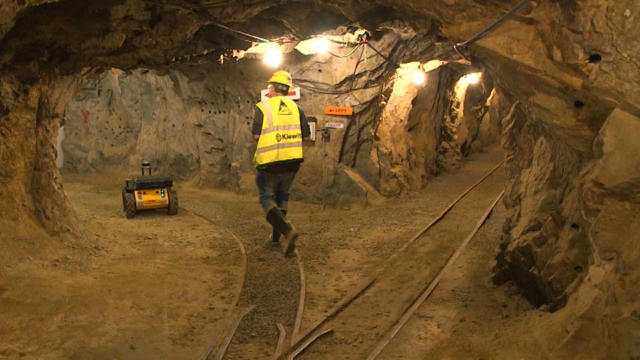Every day it seems, robots acquire new capabilities. The robotics field continues to evolve rapidly. Now, robots are starting to go underground to explore mines, caves and tunnels that can be pretty dangerous to humans.
CGTN’s Hendrik Sybrandy reports.
The robotics lab at the Colorado School of Mines is full of machines of various shapes and sizes, each a futuristic work in progress.
Hao Zhang is an assistant professor at the Colorado School of Mines and he’s developing two robots named Husky and Jackal.
They’re two battery-powered robots that are being trained to explore mines and other underground spaces, like this abandoned gold and silver mine in Idaho Springs, Colorado.
Andrew Petruska works with Zhang on the mine robot project.
“An underground environment is completely black, there is no light, so your eyes are worthless. You carry light with you, then you’re limited by how much light you can carry and how long it will last,” Petruska said.
“The air doesn’t recycle well. Either you put huge fans in a mine to keep the air flowing well so you can breathe or if you’re at a cave, you hope the air quality is good.”
Mines often have lots of debris and tight spaces. Tough terrain for people to move around in. There’s where robots have an advantage.
Zhang and Petruska thinks robots, outfitted with sensors, may be better equipped than slow-moving human inspectors to take air samples and detect hazards in potentially toxic areas.
“The robot can build a 3-D map of the environment and we can find for example the poison gas around it,” Zhang said. “First, it will improve safety and then it can reduce cost.”
Provided, of course, that these machines are able to master rough underground landscapes and are taught to act on their own.
Drones could do something similar, not just in mines but in all sorts of caves and tunnels.
“If we could get a flying robot or a driving robot to automatically go through and do the imaging and sensing necessary,” Petruska said, “then all of a sudden we don’t have to put people in these dangerous environments.”
Canaries once served that role in coal mines. Now Petruska and Zhang have developed high-tech canaries, that can operate in dangerous conditions.
These scientists say commercialization of these robots, roaming a brave new world underground, maybe five to ten years away.
 CGTN America
CGTN America

